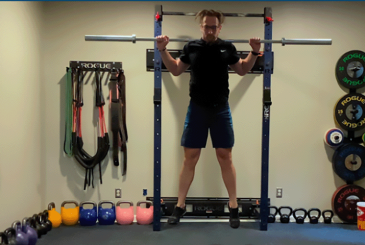Why monitor your heart rate?
To measure how hard you’re working
Recording your heart rate during exercise is easy to do and it can provide you with useful information. This is because heart rate, which is measured in beats per minute (bpm), is a common means for assessing internal training load, i.e. it tells us how much stress we are putting on the body during exercise. Integrating this important piece of information with external markers of training load, such as ergo split and distance completed, allows you to build a much better overall picture of how hard you are working and how you are coping with your training plan(1).
To track improvement
Another effective use of heart rate is that it allows you to track your improvements in fitness. For instance, by repeating the same 20-minute ergo session after a period of training, you should see that your heart rate lowers for that specific workout. Doing this over time will give you a long-term view of your training plan effectiveness.
To optimise your training efficiency
Furthermore, with heart rate you can create training zones, thereby allowing you to adjust your effort levels when exercising. Whilst these heart rate training zones will not really be useful for your strength and conditioning, they will be particularly beneficial for your various cardio sessions, which will differ in intensity. For example, for a given workout on the ergo, heart rate training zones can help guide your effort levels to ensure your easy sessions are easy and your hard sessions are hard.
Training ‘smart’ in this way, as previously described by John Collins, is key to balancing training with fatigue and ultimately gaining improvements in fitness. So instead of solely relying on ratings of perceived exertion or ergo splits, in the future you can consider using heart rate training zones to help optimise your effort levels. Irrespective of the above, using heart rate and setting training zones does have some caveats.
Things to consider
- Heart rate is very individual. Person-to-person variations in physiology means that your resting heart rate and maximum heart rate, as well as your training zones, will likely be different to the person next to you. As a result, if you and a friend were to complete a cardio session together at a target heart rate of 150 bpm, it is entirely possible that you would find this easy, whereas your friend would find it difficult. Ultimately, it could mean that you are working at the wrong intensity and not completing the training sessions as they are designed to be completed. The take home message: generic heart rate training zones should be taken with a very large pinch of salt!
- Heart rate can fluctuate according to a number of factors including your hydration levels, the time of day, and temperature of the room. Although this is by no means a reason to not use heart rate, it is just something to be aware of. For example, as suggested above, if you were to repeat the same 20-minute ergo session before and after a period of training to track changes in fitness, it is important that you complete this exercise at a similar time of day and consume similar food and drink beforehand. Simply put, try and control as many factors as possible.
- Target heart rate ranges will be better to aim for during your training, as opposed to precise values (e.g. 140-145 bpm vs 143 bpm) – this will help account for the within-person variation that can be seen with heart rate.
Setting heart rate zones
Setting your heart rate training zones is not straightforward. The most accurate method is to complete a laboratory test, conducted by a professional with specialised equipment. However, for many individuals this will not be possible. So what can you do?
Well, first of all you will need to know or estimate your maximum heart rate. To do this you could record the maximum bpm your heart rate reaches during a sweaty, all-out 2000m ergo test. Alternatively, you can use the classic formula below to provide a rough estimate of your maximum heart rate. Although research has shown this formula is not perfectly accurate, it is easy to use and will get you on the right track.
Maximum heart rate = 220 – Age
After determining or estimating your maximum heart rate, you can use it to generate some individual heart rate zones. Now, there are many different training zone models but you can keep it simple by defining your zones as a percentage of your maximum heart rate:
Zone 1 – Very Light 50-60% of MHR
Zone 2 – Light 60-70% of MHR
Zone 3 – Moderate 70-80% of MHR
Zone 4 – Hard 80-90% of MHR
Zone 5 – Maximum 90-100% of MHR
Once you have set your heart rate training zones, you can put them into action. As an example, if you were completing a 4 x 5 minute ergo session at 22-26 strokes per minute, Zone 3 would represent an optimum target heart rate range to aim for. In contrast, Zone 2 would be more appropriate when focusing on building endurance, with long, low-intensity exercise.
Another use of these heart rate zones is that they can help guide your cross-training. For instance, when compared to the full-body movement of rowing on an ergo, your heart rate during cycling will typically sit a little bit lower (approximately 10 bpm) because you are only using your leg muscles to pedal.










